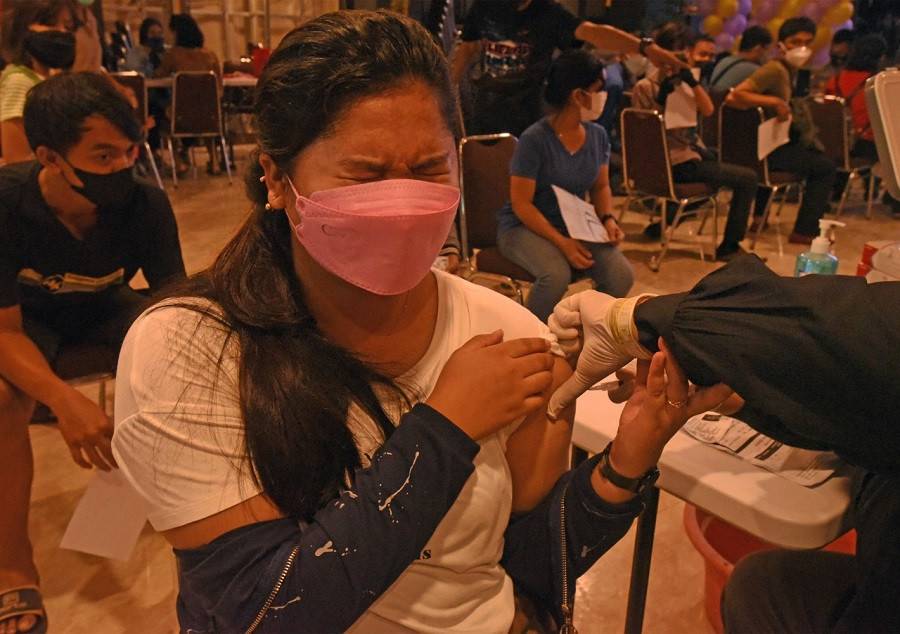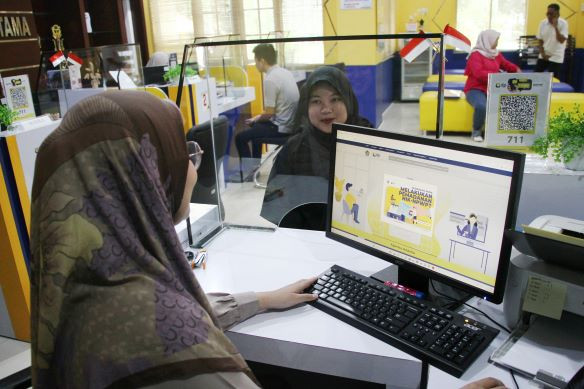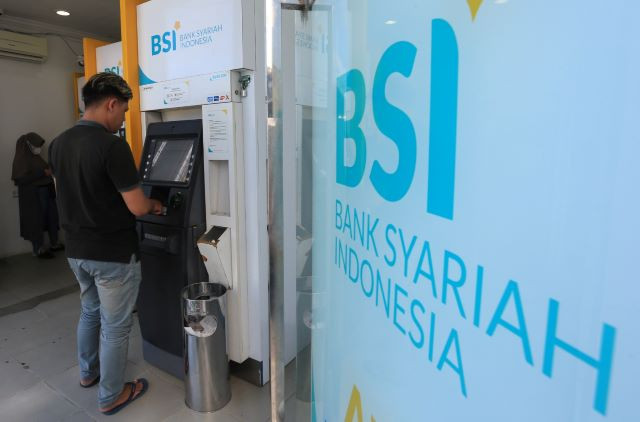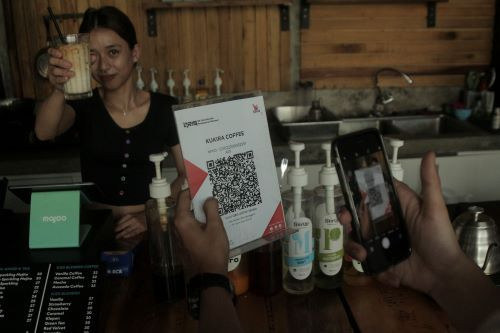The unexpected catalyst for vaccine deployment in Indonesia - real-time data
Even with hourly updates, the data would still lack an element of immediacy, while also posing immense manpower requirements.
Change Size
 No pain, no gain: A woman reacts as she receives a COVID-19 vaccine jab during a mass vaccination event at the Indonesian Bethel Church in Serang, Banten, on Friday. The local health agency, the Indonesian Military (TNI) and the National Police organized inoculation drives at places of worship to help the government achieve its COVID-19 vaccination target.
(Antara/Asep Fathulrahman)
No pain, no gain: A woman reacts as she receives a COVID-19 vaccine jab during a mass vaccination event at the Indonesian Bethel Church in Serang, Banten, on Friday. The local health agency, the Indonesian Military (TNI) and the National Police organized inoculation drives at places of worship to help the government achieve its COVID-19 vaccination target.
(Antara/Asep Fathulrahman)
W
ith daily COVID-19 cases still on the uptick, governments are doubling down on vaccination efforts in a bid to reopen borders, stimulate their economies, and reinstate some sense of normalcy. Yet, the problem plaguing most of the Southeast Asian region is a lack of vaccine supplies – especially as studies reveal the added need for regular booster shots to maintain immunity.
With less than 30 percent of the population vaccinated and the highly infectious Delta variant continuing to drive up infection rates, Indonesia is faced with the urgent challenge of managing the COVID-19 contagion, while also fast-tracking administration of the vaccines. While having increased access to the vaccine will certainly ease the burden, making way for real-time visibility could be a key component to speeding up the vaccine deployment process.
At present, authorities in the region typically provide daily updates on local COVID-19 cases on official dedicated websites. However, these numbers are often static throughout the course of the day, owing to how the numbers are processed. Rather than relying on event-driven architecture that undergirds systems that provide real-time updates – such as stock indexes – these COVID-19 tracking systems tend to rely on batch processing. Batch processing is a traditional, and still very common form of computing where information is exchanged periodically on a set schedule.
In the case of Indonesia’s daily report of COVID-19 cases, batch processing allows for numbers to be updated at the end of each day. However, one major drawback of this approach is that the granular detail about how or where the cases have developed is lost. Consequently, regulatory bodies may miss out on opportunities to develop actionable insights that could improve and inform their vaccination plans.
Real-time flow of vaccination data would enable the relevant authorities to enhance deployment speed by identifying trends and areas for process improvement. For instance, being able to monitor vaccination numbers throughout the course of the day would lend insight into identifying and removing the obstacles that hinder deployment processes – such as logistical issues around vaccine delivery or the ability for patients to be booked in for appointments.
With most countries already grappling with a shortage of vaccines and the vaccine doses being vulnerable to damage caused by shifts in temperature, such insight could reduce wastage while allowing for resources to be channeled where they are needed the most.
For the public, having real-time updates would also instill a greater sense of reassurance and trust in the vaccination rollout. Rather than news channels and official websites indicating stale numbers that grow more out of date as the day progresses, a continually updating number could create a sense of collective participation. Further to this, experts have suggested that a sense of community might be one of the most important factors in convincing more members of the public to get inoculated. Especially with Indonesia’s plans to administer 50 million doses of the vaccine each month, public willingness to receive the vaccines would be an important component to ensuring that goal is met.
While real-time data flow can provide Indonesia with the much-needed impetus for its vaccination deployment plan, the sheer size of the Indonesian archipelago may make it a herculean feat to achieve without event-driven thinking. With the present method of batch processing, every vaccination site would have to operate in isolation to manually record and track their vaccine delivery progress. Even with hourly updates, the data would still lack an element of immediacy, while also posing immense manpower requirements.
However, should event-driven thinking guide the data collection and transmission process, every event that occurs in the real world would be treated as necessary data that IT systems can consume and respond to. Instead of waiting to report on the vaccination progress – by means of a large spreadsheet or other methods that rely on manual data entries– the event of a vaccine being administered is created and sent as it takes place.
Additionally, the event would be able to provide more information than simply whether a vaccine was administered. It would include a myriad of other insightful data – such as where the vaccination took place, demographics of the patient, time of administration, as well as the type of vaccine used. All of this information will then be consumed by a central system – connected to all vaccine centers through an event mesh - which would be able to provide a consolidated real-time view of vaccine data.
For a vaccine deployment system that is operating in a fully event-driven manner, the possibilities for insightful data generation are endless. The ability to record and track the shipment of vaccines to the very second can significantly reduce potential wastage of vaccines owing to inefficient delivery processes.
Additionally, full visibility into the vaccine delivery and administration chain can afford governments the enhanced capability to optimize resources in real-time. This could take the form of diverting resources where needed, or simply being able to arrange for more vaccines before a severe shortage is experienced.
After all, event-driven thinking has proved successful in helping governments and organizations unlock greater efficiency and revenue growth across a wide spectrum of use cases- be it to reduce costly delays in maritime logistics or power smart city solutions.
Now with the COVID-19 vaccination program, real-time data flow enabled by an event-driven approach might just be that unexpected - but crucial - catalyst to bring Indonesia closer to a state of normalcy again.
***
The writer is general manager Middle East, Asia Pacific and Japan at Solace.









